Dr Judith John is a trained botanist, with a main interest in plant and animal interactions, ecology, habitats, and mammals. Judith worked for the London Borough of Bromley (LBB) promoting Local Nature Reserves, was a member of the World Heritage Site Bid team, Darwin at Downe, and was later a Site Manager for Keston Site of Species Scientific Interest (SSSI) and other Sites of Importance for Nature Conservation (SINCs) within LBB. As well as being involved with the relaunch of Bromley Biodiversity Partnership in May 2015, Judith also comments on some planning applications which have implications for biodiversity and runs LBB’s citizen science surveys for toads and hedgehogs. In 2023, together with other Bromley Biodiversity Partnership members, Judith suggested a few new SINCs and upgrades and took part in surveying small woods in LBB for GiGL’s Ancient Woodland Inventory Officer, Frankie.
Hedgehogs are the subject of a Species Action Plan in the London Borough of Bromley. Bromley Biodiversity Partnership has been running a Citizen Science Hedgehog Survey since 2017. Numbers of records received by the Partnership each year have steadily increased, reaching a peak of 51 in 2021. Most of the records received were from garden security and wildlife cameras, while Bromley’s Biodiversity Team (idverde) at High Elms worked with children at local schools and allotment holders to survey hedgehogs using tunnels. Patterns emerged of areas where there seemed to be good populations with evidence of breeding. These were close to green spaces and often appeared to link them, perhaps unsurprising as hedgehogs will travel 1-2 kms per night in search of food and mates. Mapping from 2017 to 2021 shows locations from where we received records (head to Bromley Friends Forum, and see all hedgehog record maps here).
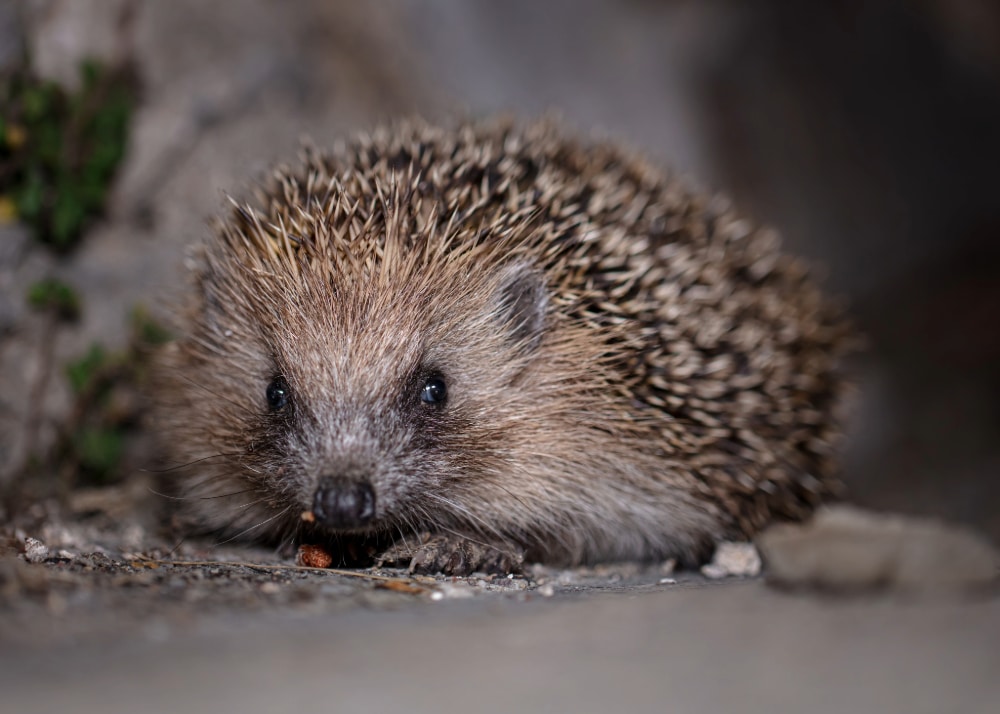
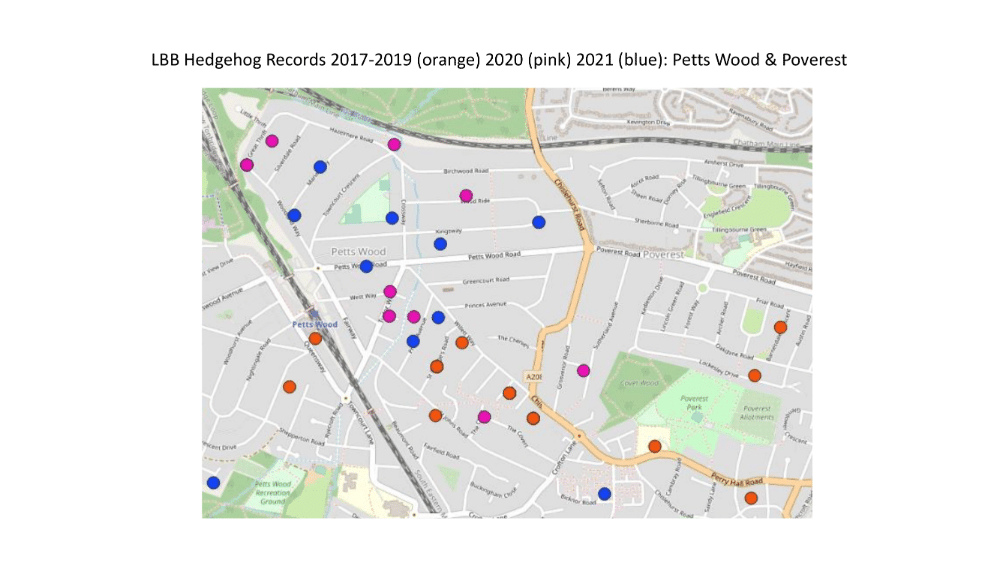
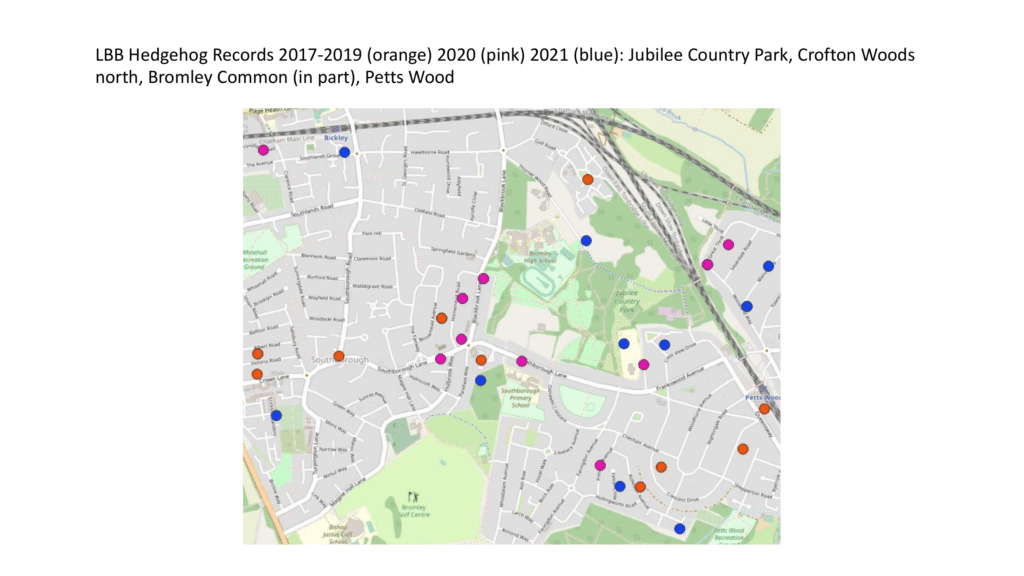
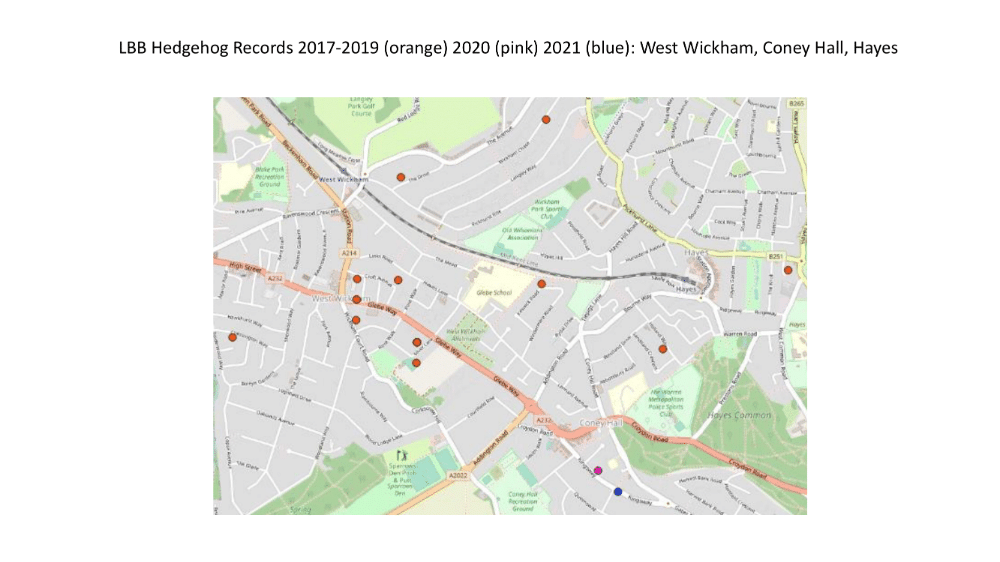
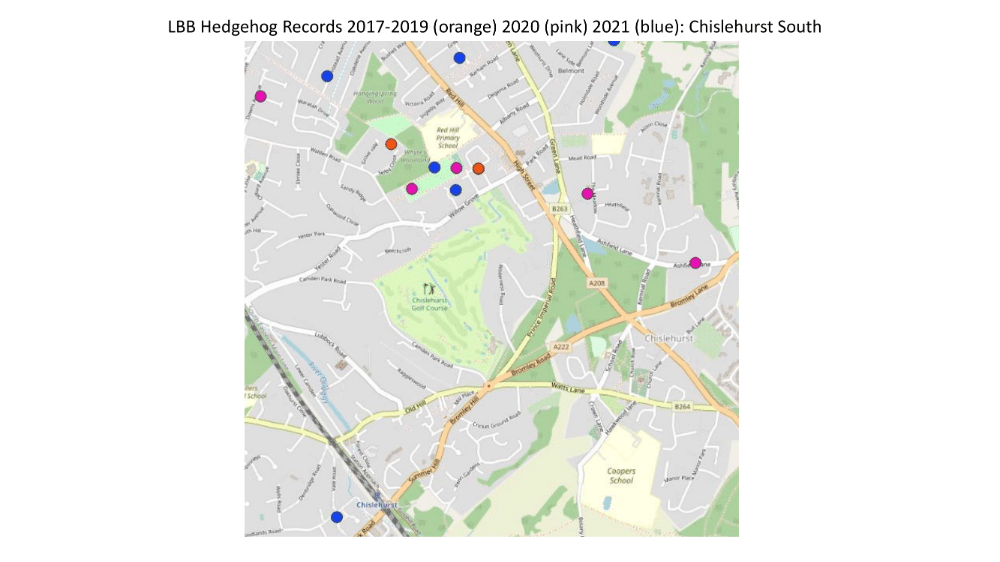
Isolation of clusters and scattered records in other parts of the Borough may of course reflect a lack of recording rather than a lack of hedgehogs. Up until 2022, our main concern regarding hedgehog recording in the Borough was that we needed to improve publicity for the survey in areas where we had no records but thought gardens and green spaces could be supporting hedgehogs. Then in 2022, the number of records received dropped by about 44% to 29 and in 2023 we received only 8 records. A regular recorder from Petts Wood reported less hedgehog sightings in 2022, and in 2023 he commented: ‘For the first time since the wildlife camera installation in 2014, no hedgehogs or hedgehog droppings were seen.’
Hedgehogs become dehydrated easily, and in 2022 the RSPCA reported that country-wide they had been called out to high numbers of dehydrated hedgehogs. Therefore, one factor contributing to these lower numbers could have been the very hot weather and drought in London that year, which may have led to increased hedgehog deaths and reduced breeding success. The Wildlife Trust for Lancashire, Manchester & North Merseyside reported hedgehog numbers in 2023 were down 33% and Help4Hedgehogs (a hedgehog rehabilitation group in Sussex) reported that it cared for more than twice as many animals in 2023 as it did in 2022. Local Hedgehog expert Mavis Righini, who runs the Hedgehog Rescue, ‘Prickles Hedgehog Haven’, reported a reduction in the number of hedgehogs requiring rescue in the London Borough of Bromley in 2022 which worsened in 2023, she presumed this to be due to lower numbers of hedgehogs being seen by the public. Although summer 2023 appeared cooler than 2022, Met Office data for June 2023, a month when young are often born, shows that rainfall was 50-75 % lower and mean temperature was 1.5-2-5 degrees C higher than averages for June 1991-2020. This suggests 2024 may again be a problem for hedgehogs.
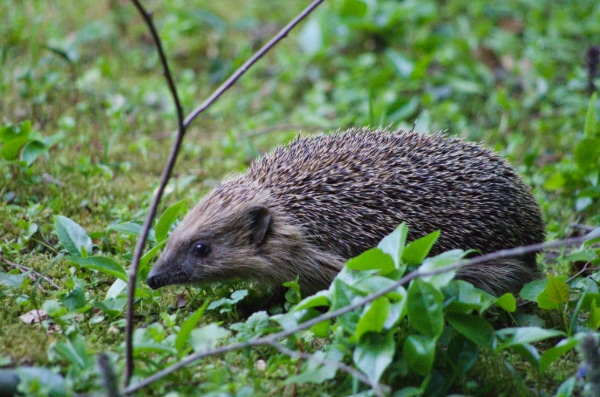
General UK data for 2023 hedgehog numbers is currently not available. The next ‘State of British Hedgehogs ’ Report, due in 3-4 years, will show the wider UK picture (2022’s report can be viewed here). This should help us see whether the low numbers recorded in the London Borough of Bromley in 2022 and 2023 were a local phenomenon, possibly due to less vigorous survey promotion, or whether there have been similar declines elsewhere in urban areas. Records received have enabled us to see the apparent decrease in hedgehog numbers. They have helped in understanding how hedgehogs are distributed in the borough of Bromley, highlighting some areas important for breeding animals and suggested where efforts to link greenspaces should be concentrated. Examples of environmental improvements for hedgehogs put in place by Bromley’s Conservation Team at High Elms (idverde) and Friends Groups, include some targeted meadow creation and mixed native species hedgerow planting. These provide some protection for hedgehogs, food for some of the invertebrates that hedgehogs eat, and connectivity between sites. All of our records go to GiGL and are therefore picked up by ecologists working for developers, the records have also provided the evidence required for us to successfully request the installation of ‘Hedgehog Highways’ amongst the Conditions accompanying some approved planning applications.
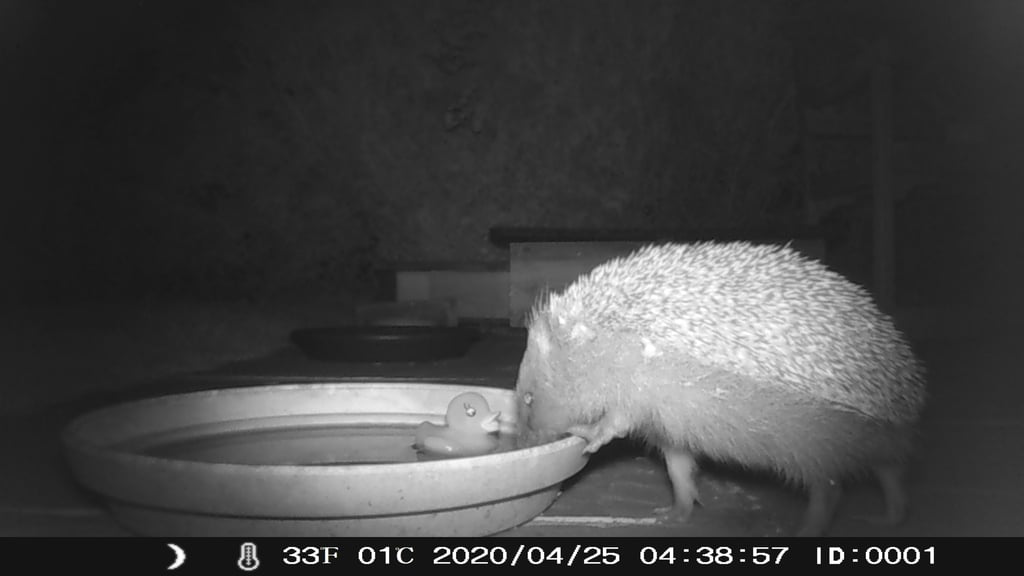
Erratic weather patterns in 2022 and 2023, and ever declining invertebrate numbers may have contributed to low numbers, but we are now trying to redouble our efforts to publicise the survey and highlight how everyone can help by:
- sending in records.
- putting out water for hedgehogs during hot, dry weather.
- putting out cat or dog food to supplement hedgehogs’ diet when the soil is dry and hard and invertebrates are harder to find, which is especially a problem when hedgehogs are feeding at a young age and before hibernation.
- making or buying a hedgehog home (there are instructions on the web, e.g. on The Wildlife Trust’s website here)
- leaving some undisturbed wild areas in gardens to provide shelter and hibernation sites, and to support the invertebrates’ hedgehogs eat.
- putting in ‘Hedgehog Highways’ (13 x 13cm holes) between gardens and greenspaces to improve connectivity and help keep them away from roads. See Hedgehog Street at www.hedgehogstreet.org for instructions, help and advice.
Thank you for any help you can manage.
